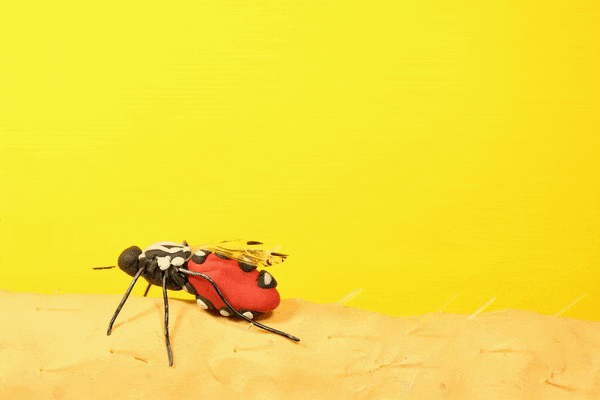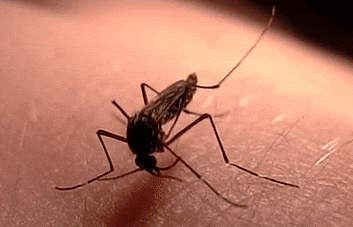
Living a life of luxury in the laboratory
Words and images: Perran Ross
Mosquitoes in the wild live it rough. Adult females risk being swatted as they search for a blood meal and their larval progeny must fend off predators and compete for limited resources. When we want to study mosquitoes under controlled conditions we bring them into the laboratory, but these conditions often don’t reflect their natural environment. In the lab, we maintain colonies of mosquitoes in ways that maximise their chance of survival, the number of eggs they lay and their development speed. This makes them easier to work with, but after many generations in the laboratory this might lead to changes in mosquito behaviour, size or life history. This occurs because mosquitoes that reach maturity quicker or lay more eggs have an advantage in this new environment, while other traits like resistance to insecticides or high temperatures are no longer necessary. Eventually, mosquitoes from the laboratory may no longer resemble wild mosquitoes. This can be an issue because scientists often use laboratory strains of mosquitoes when performing experiments to understand natural mosquito populations.

In nature, adult female mosquitoes risk being squished while they feed
Many insects adapt to laboratory conditions and their performance can either increase or decrease over time depending on the trait. Insects reared in the laboratory for many generations tend to reach maturity quicker due to the advantages of rapid development, while other insects might be negatively affected by laboratory rearing if they are prone to the effects of inbreeding. In some cases these changes are dramatic and can happen within only a few generations (click here for a recent article on this topic). So what happens in Aedes aegypti, the primary vector of dengue and the most widely studied mosquito species?
In a new open access study published in Evolutionary Applications , we wanted to test if wild Aedes aegypti were any different after living in the lab for a year. Mosquito eggs collected from Townsville were brought back to the lab where we hatched the larvae. We then split these mosquitoes into different populations and maintained them for 12 generations (approximately 1 year) under laboratory conditions. We set up large populations with 400 mosquitoes each, but also smaller populations to see if these mosquitoes were susceptible to inbreeding effects. For each population size we maintained multiple cages at once to see if populations drifted apart over time. By storing mosquito eggs for long periods, we were able to compare these laboratory populations directly to their ancestors to test for laboratory adaptation. We then measured a variety of traits that are important indicators of mosquito performance in the wild, including larval development time, survival to adulthood, fecundity, egg hatch, wing length, male mating competitiveness and larval competitiveness.
In the laboratory, mosquitoes are provided with all the modern conveniences, including a fresh blood meal every week from a willing volunteer
We found that mosquitoes from the lab don’t differ much at all from mosquitoes collected more recently from the field, at least for the traits we tested. Though laboratory mosquitoes usually reached adulthood slightly faster than their wild counterparts, this trend wasn’t consistent when we compared lab and field mosquitoes collected from other locations (Cairns and Innisfail). It’s possible that adaptation to the laboratory takes much longer than a year or occurs very quickly (within 1-2 generations). Or, perhaps they don’t need to change at all; Aedes aegypti are already adapted to living in urban areas and seem to be well-suited to the laboratory. On the other hand, many Anopheles mosquitoes (vectors of malaria) do not perform well in the laboratory initially, and we would expect much larger and more rapid changes in these species.
Though mosquitoes maintained as large populations in the laboratory performed well, there were costs for small populations of mosquitoes (100 individuals each generation). Populations derived from single females (isofemale lines) and lines that were inbred each generation performed poorly, with reduced egg hatch, extended development and lower mating success. Some of the inbred mosquito lines displayed traits such as developmental defects, pale colour variants, unusual egg laying patterns and an inability to feed on blood. Most of these lines failed because the costs of these traits were severe.

An inbred mosquito struggles with everyday life
These results are important because modified Aedes aegypti are now being released around the world in disease control programs (see our post on deploying Wolbachia-infected mosquitoes for dengue control). Mosquitoes are usually maintained in the laboratory for at least a few generations to build up numbers for release. In some cases, populations might be derived from low numbers of individuals or maintained at small sizes at some point during their time in the laboratory. Our results suggest that large populations are needed to maximise the performance of mosquitoes when released into the field.
Our findings are also relevant to how we conduct experiments in the laboratory. We found differences between replicates of each population, even after only a few generations. This suggests that populations can drift apart, making it difficult to compare lineages of mosquitoes that have been maintained separately. Since there is great interest in comparing the performance of wild mosquitoes to modified mosquitoes (e.g. ones infected with Wolbachia or genetically engineered to be sterile or resistant to viruses), we need to ensure that differences between strains are due to the modification and not other factors. We hope that the findings of our study will inform how mosquitoes are maintained in the laboratory for experiments and field releases.

This study is indeed interesting and goes back to the basics when we base our inferences on laboratory studies. We need to be careful that devoid of its ecology an organism will show altered behaviour in the lab. Hence any argument made about effectivity should be taken with a pinch of salt.
Good work Perran. Keep the publications flowing.Dad